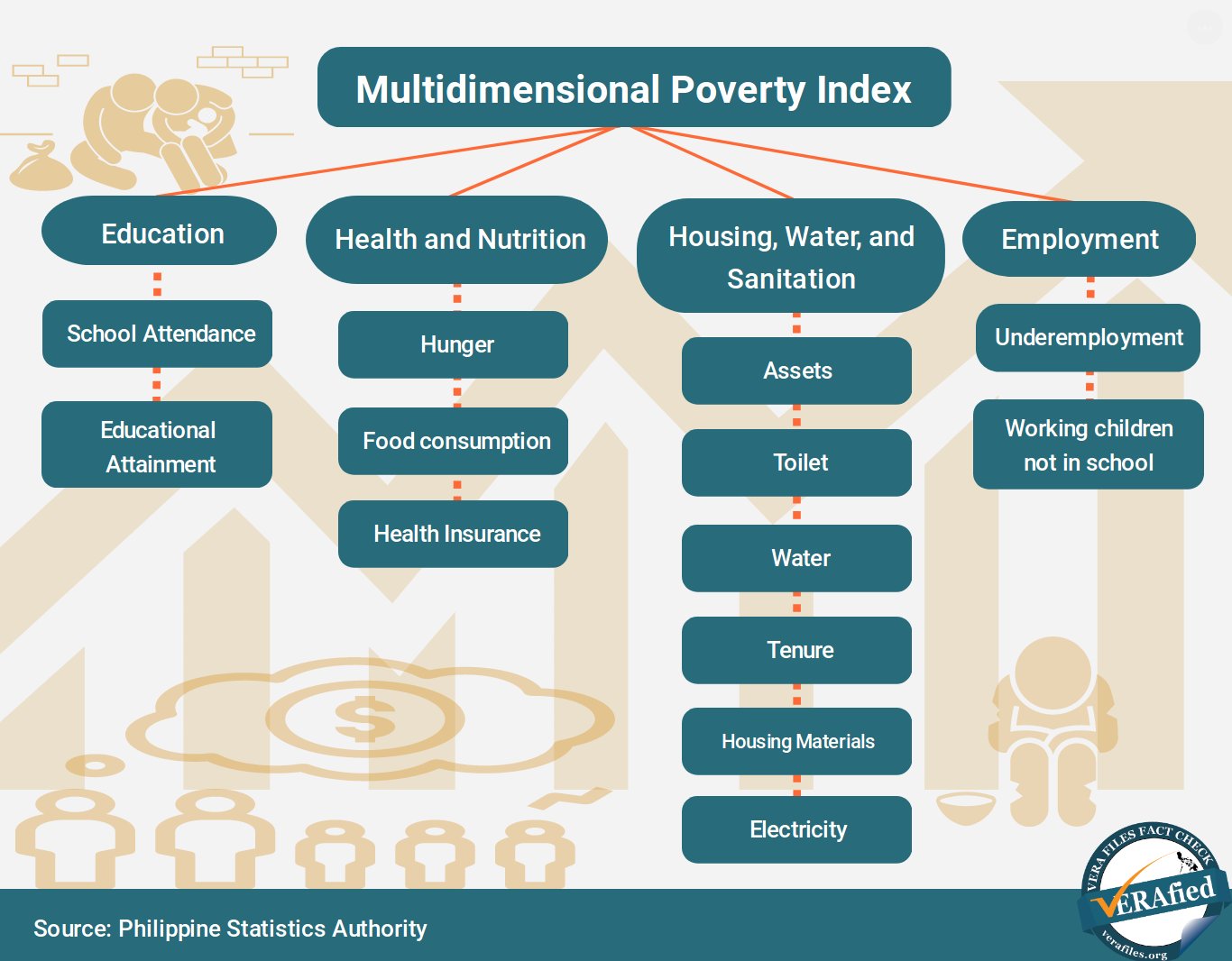In a speech before the 74th session of the United Nations General Assembly (UNGA) on Sept. 28, Foreign Affairs Secretary Teodoro “Teddy Boy” Locsin Jr. said the Philippine government’s progress in attaining the “aspirations” of the people, such as the fight against poverty and crime, cannot be measured based solely on income per capita.
He mentioned that the country has started to use a new metric to measure poverty: the multidimensional poverty index (MPI).
Introduced in 2018, MPI complements the 50-year-old measure of poverty in the country that uses data on the income of Filipino families generated through the Family Income and Expenditures Survey (FIES) conducted every three years.
Here are three things about MPI.
What is the multidimensional poverty index (MPI)?
MPI, as defined by the United Nations Development Programme (UNDP), is “a comprehensive measurement tool that can provide a holistic understanding of the lives of the poor while enabling more effective and efficient poverty reduction policymaking.”
PSA, the government’s central statistical agency in charge of official data collection, introduced the initial MPI methodology in the country in November 2018 to “capture” non-monetary deprivation of Filipino families.
The statistics office said the MPI complements the income-based measure of poverty by also looking into the level of deprivation of basic needs like education and health.
Complementing monetary and non-monetary information provides a more complete picture of poverty, whereas measuring it with “single income or expenditure” is an “imperfect way” to understand the “deprivations” of the poor, said the United Nations Department of Economic and Social Affairs (UN DESA) in 2015.
According to the Multidimensional Poverty Peer Network, a network of countries and organizations that provide help for the use of MPI, the Philippines has joined 21 other cities and countries that have implemented MPI as an official poverty metric.
The components of MPI
Merging data from the 2016 and 2017 Annual Poverty Indicators Survey (APIS) and Labor Force Survey(LFS), the PSA came up with four dimensions and 13 indicators to determine where Filipinos are most deprived in.
These can be broken down to reveal the incidence and contribution of each indicator to the overall poverty incidence in the country:
Click the boxes of each indicator to know their definitions.
According to PSA, deprivation in at least four of these 13 indicators means a Filipino is classified as “multidimensionally deprived.”
PSA learned in 2017 that Filipino families are most deprived in education, with five out of 10 who had at least one family member aged 18 years old and above unable to complete basic education. Hunger, meanwhile, had the least number of incidence in the same year compared to other poverty indicators.
Criticisms to MPI
In a 2018 Philippine Institute for Development Studies (PIDS) study, senior fellow Jose Ramon Albert and research assistant Jana Flor Vizmanos said MPI may not “necessarily” be the way to improve poverty measurement. They said its contribution to better understand poverty and the policies to rid it is “unclear.” They noted it also arbitrarily adds up “fundamentally” different things, saying it is like a “fruit salad” with different ingredients.
Labor leader and former senatorial candidate Leody De Guzman also questioned MPI in April for having “very limited” components and “unbelievable” thresholds, referring to the importance assigned to each indicator. He said the selection of the components and thresholds of MPI was a “big problem.”
He proposed a “participatory multidimensional poverty index” that includes public inputs
on the “most important” indicators to poverty and their values before preparing a formula for MPI.
Meanwhile, PIDS urged the government not to “merely” show the changes in measuring poverty, but to explain the changes in the indicators to be generated and how MPI relates to the official income poverty measurement.
Sources
United Nations, STATEMENT OF THE REPUBLIC OF THE PHILIPPINES, High-Level Week General Debate 74th Session of the General Assembly, Sept. 28, 2019
Philippine Statistics Authority, About PSA
Official Gazette, Republic Act No. 10625, September 12, 2013
Philippine Statistics Authority, Filipino Families Are Most Deprived in Education
Philippine Statistics Authority, TECHNICAL NOTES ON THE ESTIMATION OF THE MULTIDIMENSIONAL POVERTY INDEX (MPI) BASED ON THE INITIAL METHODOLOGY
United Nations Department of Economic and Social Affairs, Development Issues No. 3: Multidimensional Poverty, Oct. 21, 2015
Philippine Institute for Development Studies, PSA: Crafting Of New Poverty Indicator Must Be Done By Govt, Jan. 7, 2019
Philippine Institute for Development Studies, Poverty is Multidimensional: But Do We Really Need a Multidimensional Poverty Index?
Philippine Institute for Development Studies, About Us
Official Facebook page Ka Leody Manggagawa, Press Release, April 11, 2019
Multidimensional Poverty Peer Network, Who uses a multidimensional approach?
United Nations Development Programme, How to Build a National Multidimensional Poverty Index (MPI): Using the MPI to inform the SDGs
Philippine Statistics Authority, Technical Notes on the Family Income and Expenditure Survey (FIES)
Philippine Statistics Authority, The Philippine Statistical Survey of Households Bulletin Series No.14
(Guided by the code of principles of the International
Fact-Checking Network at Poynter, VERA Files tracks the false claims,
flip-flops, misleading statements of public officials and figures, and
debunks them with factual evidence.
Find out more about this initiative and our methodology.)

